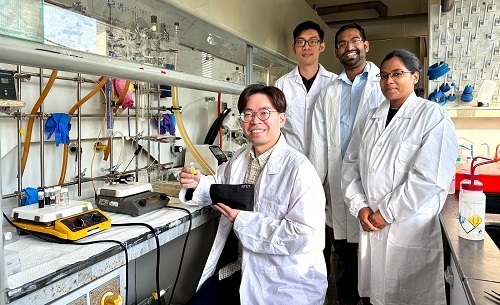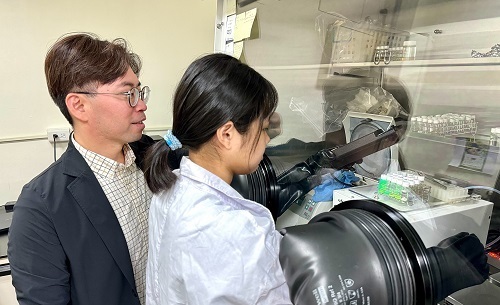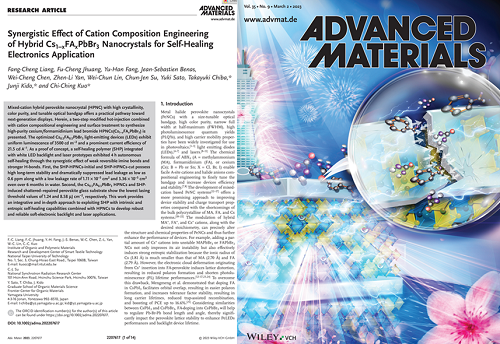2023 Taipei Tech with US and Japan jointly publish international journals
National Taipei University of Technology (Taipei Tech) Professor Chi-Ching Kuo, along with doctoral student Archana Pandiyan, Research Assistant Professor Loganathan Veeramuthu, and collaboration with Assistant Professor Tao Zhou from Pennsylvania State University, have introduced green concepts into perovskite structure materials. This innovation adds reusable value or generates clean energy, pioneering the exploration of the application of perovskite composite materials in smart textiles. This contribution to sustainable environments has been successfully published in the latest issue of the prestigious international journal "Progress in Materials Science," titled "Development, Challenges, Opportunities, and Future Research Directions of Perovskite and its Composite Materials in the Field of Smart Textiles."
Professor Chi-Ching Kuo pointed out that perovskite has become the most promising low-cost energy material in various optoelectronic devices. The research team, in collaboration with Taipei Tech's Smart Textile Technology R&D Center, explored the application of perovskite composite materials in smart textiles. This spans from the preparation of perovskite, the formation of nanofibers, extending to applications such as luminescent fabrics, piezoelectric sensing patches, wound dressings, and more. As clothing continues to evolve, with fabrics emphasizing warmth, cooling, wind resistance, breathability, waterproofing, etc., future functional fabrics are expected to convert forces into electricity through body movements, enabling power generation and storage. Perovskite materials hold potential for such applications.
Furthermore, Professor Chi-Ching Kuo, along with doctoral student Fang-Cheng Liang, jointly supervised students Fu-Cheng Jhuang, Yu-Han Fang, Jean-Sebastien Benas, and collaborated with Professor Junji Kido's lab at Yamagata University in Japan. Their research results have also made it to the cover of the top international journal "Advanced Materials," with the title "Synergistic Effects of Cation Combination Engineering in Cs1−xFAxPbBr3 Nanocrystals for Self-Healing Electronic Applications." This breakthrough combines perovskite materials with self-healing materials, astonishing the international academic community.
Professor Chi-Ching Kuo explained that conventional perovskite components can be used in various luminescent or conductive materials such as solar cells, LEDs, and optical memory. However, these materials are easily damaged by water and oxygen in the air, reducing their optoelectronic properties. They pioneered the combination of perovskite materials with their developed self-healing polymer, using the self-healing material to encapsulate the perovskite, endowing it with a self-healing capability. The lead does not leach into the environment, and it remains stable in water for over six months, making it more durable. This aligns with the mainstream development of green materials, and the technology has obtained a patent in Taiwan.
Professor Chi-Ching Kuo stated that this research achievement took four years of effort. They sent students to Japan to learn how to prepare high-purity and highly luminescent perovskite quantum dots. The team continuously optimized the process, developed self-healing polymer materials, and then integrated the two to finally create robust and reliable self-healing electronic components. These can be applied to high-performance white flexible electronic backlight panels and laser applications.



Chinese Source:https://news.ltn.com.tw/news/Taipei/breakingnews/4488257
Taipei Tech Post Issue 61:https://www-en.ntut.edu.tw/p/404-1006-133955.php?Lang=en
